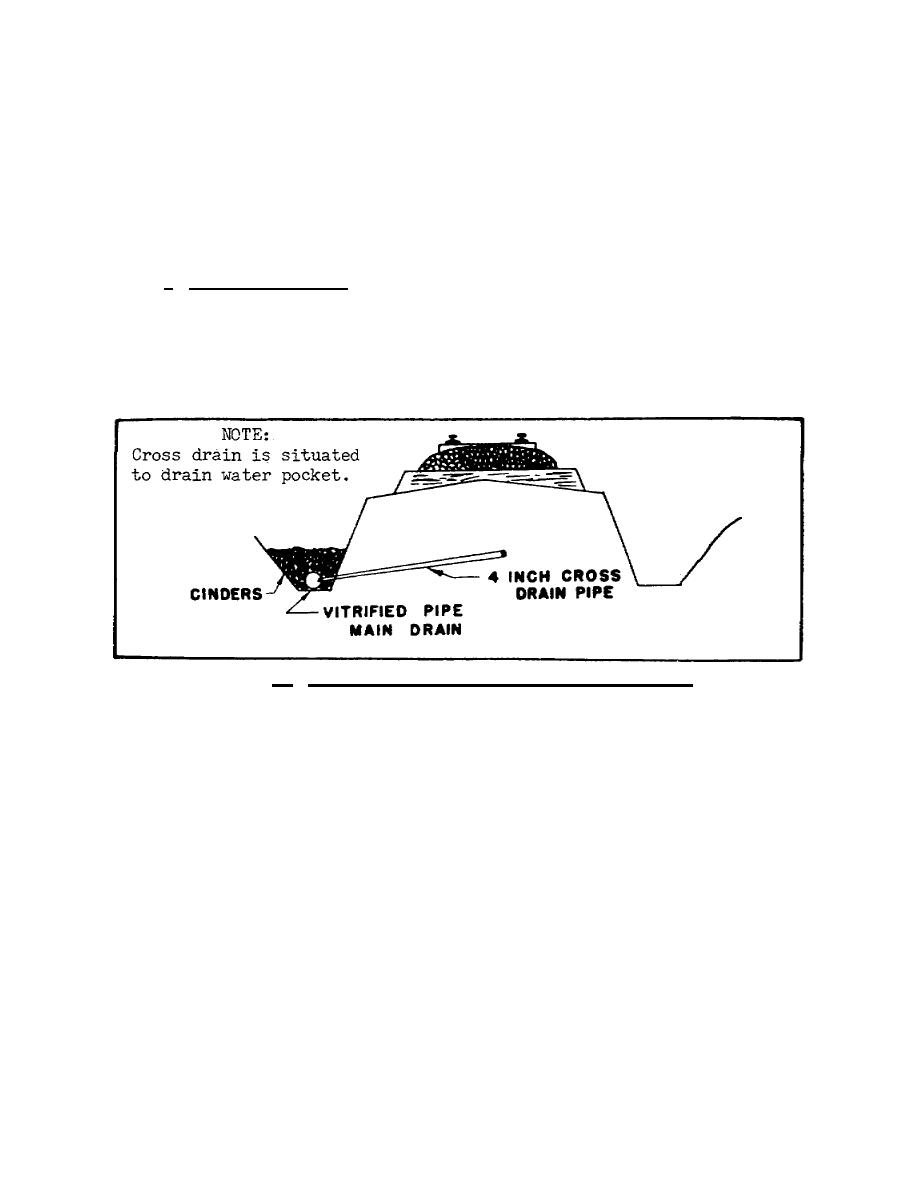
2.15.
SUPPLEMENTARY DRAINAGE
A cross drain is mentioned in the discussion of the classic solution to the water-pocket
problem in paragraph 2.12. Actually, a cross, or lateral, drain is only one type of supplementary
drainage, that is, the drainage needed to dry up water pockets and to divert water before it
reaches and endangers the track. Other remedies used to solve the drainage problem are
intercepting ditches, cinder trenches, grouting, and French drains.
a. Cross or lateral drain. The simplest form of cross drain is the removal of ballast
from several cribs, that is, from the spaces between several ties. Sometimes pipes are driven at a
slant into the roadbed from the side, as shown in figure 2.8. Cross drains tap any water tending
to form water pockets and lead it to the main side ditch or to a pipe drain. Lateral pipe drains
should be about 4 inches in diameter. If the drainage problem is severe, it may be necessary to
locate cross drains every one-half rail length, that is, at about 20-foot intervals.
Figure 2.8. Cross Drain Installation With Pipe Drain in Subgrade.
A procedure often used with pipe drains is to have them run on top of the
subgrade directly below the ballast and drain into the side ditch, as shown in figure 2.9. This
arrangement aids the flow of water across the subgrade, preventing it from seeping into the
subsoil, if the soil is spongy and soft rather than solid and impenetrable. In addition, these
drains lead off spring water if springs occur in the roadbed, as they frequently do in wet cuts.
Perforated pipes 2 to 3 inches in diameter are used. Although vitrified pipe is specified for
drainage, corrugated metal pipe is frequently used, especially for short-term military use. It
should be perforated to allow water to seep through, and galvanized or asphalt-coated to
35



 Previous Page
Previous Page
